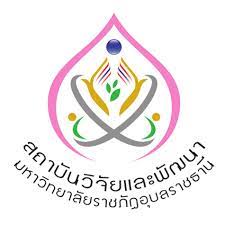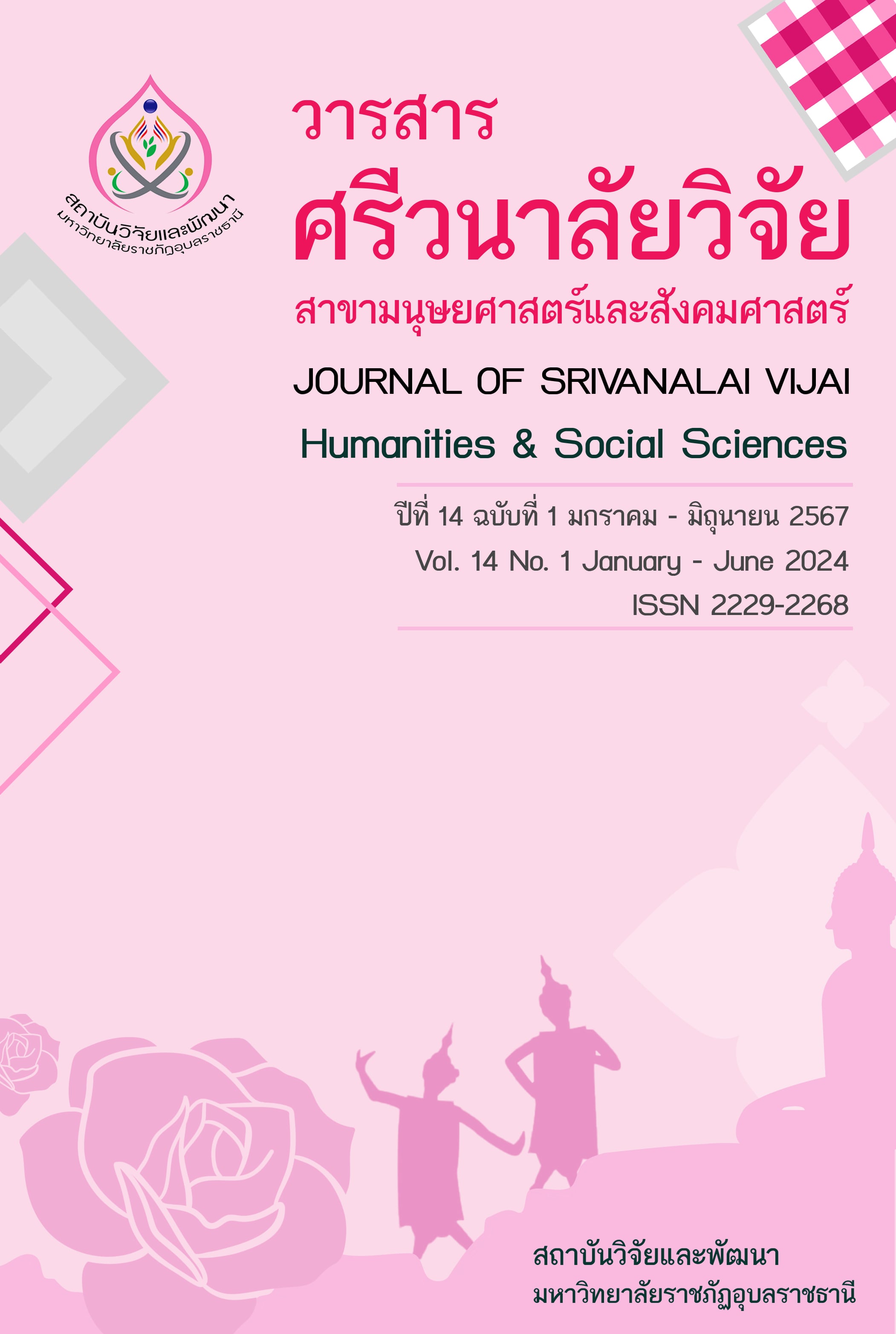ละครรำเรื่องบ่วง: การสร้างสรรค์แนวคิดและรูปแบบการแสดงจากตำนานพุทธชาดก
Main Article Content
บทคัดย่อ
บทความฉบับนี้เป็นส่วนหนึ่งของการสร้างสรรค์ละครรำ เรื่องบ่วง วิทยานิพนธ์ระดับดุษฏีบัณฑิต มีวัตถุประสงค์คือ 1. เพื่อสร้างแนวคิดการแสดงละครรำ เรื่องบ่วง 2. เพื่อสร้างสรรค์รูปแบบองค์ประกอบละครรำ เรื่องบ่วง ศึกษาข้อมูลพื้นฐานจากหนังสือ ตำรา งานวิจัยและทฤษฏีที่เกี่ยวข้อง รวมทั้งสัมภาษณ์ผู้ทรงคุณวุฒิ ผู้เชี่ยวชาญ นำข้อมูลทั้งหมดมารวบรวม วิเคราะห์ สังเคราะห์สู่การสร้างสรรค์แนวคิดและรูปแบบการแสดงละครรำ เรื่องบ่วง
ผลการศึกษาพบว่า 1. แนวคิดการแสดงละครรำ เรื่องบ่วง ประกอบด้วย 1) แรงบันดาลใจมาจากพระ อาจารย์มั่น ภูริทัตโตเถระ ผู้เป็นต้นเค้าแห่งความเจริญทางปริยัติธรรมการนำหลักปรัชญาคำสอนศาสนา ชี้นำทาง โลก โดยทางการเรียนรู้พระปริตรชาดก 2) แนวคิดในการสร้างสรรค์ละครผสมผสานในรูปแบบใหม่ จากนาฏย ลักษณ์ของละครรำดั้งเดิมและละครรำปรับปรุงขึ้นใหม่ เพื่อก่อให้เกิดการเรียนรู้ทางด้านศาสนาและส่งเสริมเผยแพร่ ไปยังภูมิภาคอื่นของประเทศให้กว้างขวางมากยิ่งขึ้น
2. รูปแบบการสร้างสรรค์การแสดงละครรำ เรื่องบ่วง เป็นการแสดงละครรำแบบผสมผสาน ได้นำจุดเด่น เอกลักษณ์หรือนาฏยลักษณ์ของละครรำ แต่ละประเภทมาผสมผสานเข้าด้วยกัน ประกอบด้วย ละครรำแบบตั้งเดิม ละครรำแบบปรับปรุงขึ้นใหม่ เพื่อสร้างสรรค์ละครรำแนวใหม่ โดยมีรูปแบบการแสดงดังนี้1) บทที่ใช้ในการแสดง ประพันธ์บทขึ้นใหม่ 2) การรำเบิกโรง มีไหว้ครูสวดบูชาก่อนเริ่มแสดงแบบละครโนราห์ – ชาตรี 3) การดำเนินเรื่อง รวดเร็ว บทพูดเจรจาแบบละครนอก 4) กระบวนท่ารำ รำตามบทร้อง และรำอวดฝีมือตามจารีตแบบละครใน 5) การแต่งกายแบบละครพันทางและละครเสภา 6) เปลี่ยนฉากตามเนื้อเรื่องแบบแนวทางละครดึกดำบรรพ์ 7) ผู้แสดงใช้ชายและหญิง 8) ฉาก แสง เสียงบูรณาการใช้เทคโนโลยีสื่อมัลติมีเดียในรูปแบบต่าง ๆ
Article Details
เอกสารอ้างอิง
ณิชาภา กระกรกุลและคณะ. (2560). การศึกษารสวรรณคดีที่ปรากฏในนวนิยายเรื่องไชน่ามูน ของประภัสสร
เสวิกุล. วารสารศิลปศาสตร์ มหาวิทยาลัยแม่โจ้, 5(1), 37 - 50.
ประพันธ์ ศุภษร. (2564). การสืบทอดภูมิปัญญาชาดกผ่านวิถีวัฒนธรรมท้องถิ่นของชาวพุทธในจังหวัดร้อยเอ็ด.
วารสารมหาจุฬาวิชาการ, 8(1), 32 - 46.
รานี ชัยสงคราม. (2544). นาฎศิลป์ไทยเบื้องต้น. (พิมพ์ครั้งที่ 1). กรุงเทพฯ: องค์การค้าของคุรุสภา.
ฤทธิรงค์ จิวากานนท์. (2550). เรื่องเก่าเล่าใหม่ 3 : การกำกับศิลป์สำหรับละครร่วมสมัย: รายงาน วิจัยฉบับสมบูรณ์
โครงการ. กรุงเทพฯ: สำนักงานกองทุนสนับสนุนการวิจัย.
พรรัตน์ ดำรุง. (2563). [บทสัมภาษณ์]. เมื่อ 20 กันยายน 2563.
มัทนี รัตนิน. (2559). ศิลปะการแสดงละคร หลักเบื้องต้นและการฝึกซ้อม. กรุงเทพมหานคร: สำนักพิมพ์
มหาวิทยาลัยธรรมศาสตร์.
สุรพล วิรุฬห์รักษ์. (2544). นาฏยศิลป์ปริทรรศน์. พิมพ์ครั้งที่ 2. กรุงเทพฯ: ภาควิชานาฏยศิลป์ คณะศิลปกรรม
ศาสตร์จุฬาลงกรณ์มหาวิทยาลัย.
เสาวณิต วิงรอน. (2560). บทละครรำเรื่องรถเสน. มหาวิทยาลัยเกษตรศาสตร์ คณะมนุษยศาสตร์ ภาควิชาวรรณคดี,
กรุงเทพฯ.
อภิณัฏฐ์ กิติพันธุ์. [บทสัมภาษณ์]. เมื่อ 28 กุมภาพันธ์ 2565.


